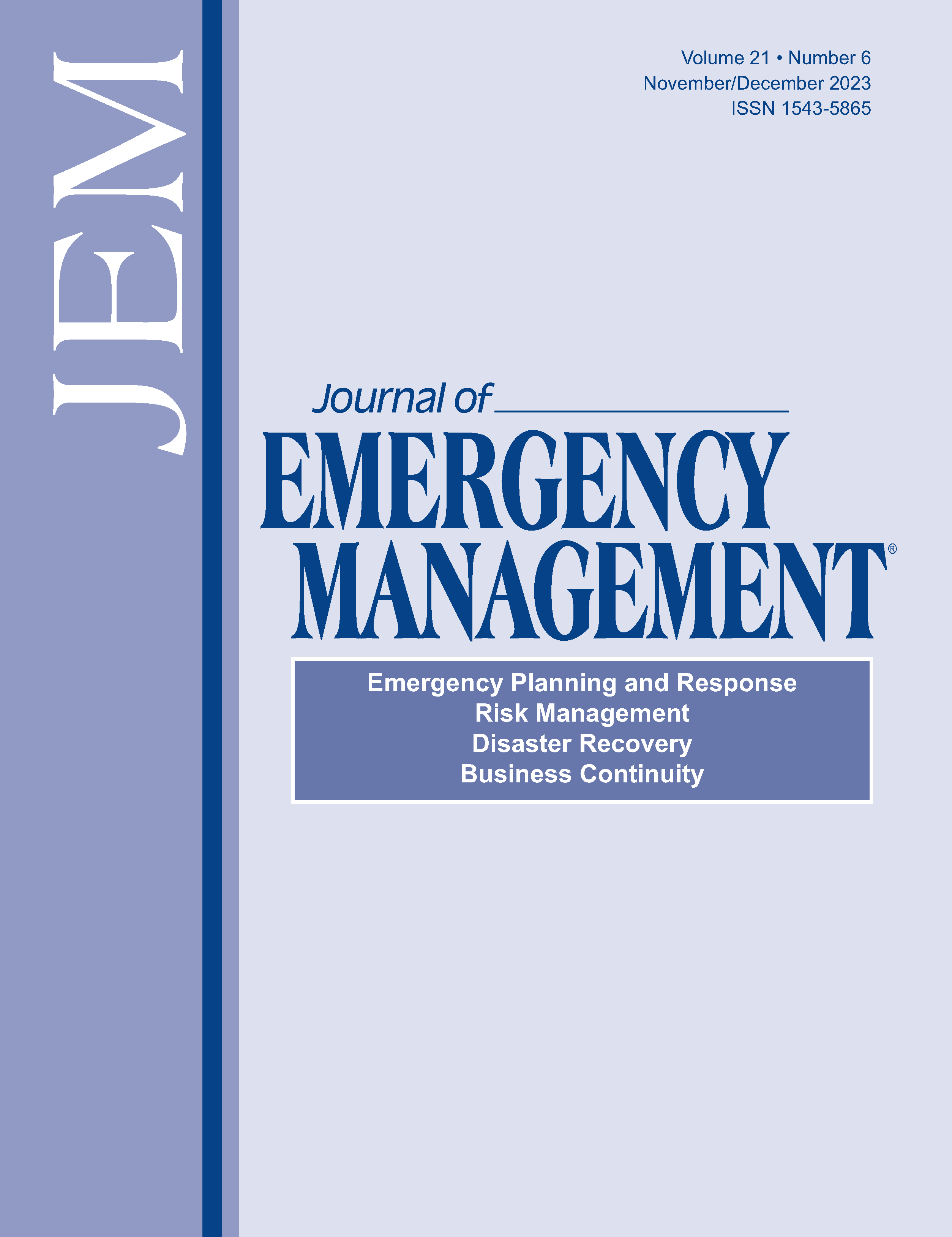Assessing the living environment of persons displaced following a strong earthquake sequence in Puerto Rico, 2020
DOI:
https://doi.org/10.5055/jem.0719Keywords:
rapid assessments, public health, emergency response, emergency management, natural hazardsAbstract
In the public health portfolio of disaster tools, rapid needs assessments are essential intelligence data mining resources that can assess immediate needs in almost all hazard scenarios. Following prolonged and unusual seismic activity that caused significant structural damage, mainly in the southwest part of the island of Puerto Rico, thousands of area residents were forced to leave their homes and establish improvised camps. The austere environmental exposure and limited access to safety and hygiene services prompted public health authorities to request assistance with conducting a rapid needs assessment of those encampments. This report summarizes the design, organization, and execution of a rapid needs assessment of improvised camps following a strong sequence of earthquakes in Puerto Rico.
References
US Agency for International Development: A rapid needs assessment guide. Percent20RNAG percent20FINAL.pdf. Available at https://www.usaid.gov/sites/default/files/documents/2155/USAID. Accessed June 25, 2021.
International Federation of Red Cross and Red Crescent Societies (IFRC): Emergency needs assessment. Available at https://www.ifrc.org/en/what-we-do/disaster-management/responding/disaster-response-system/emergency-needs-assessment/. Accessed June 25, 2021.
Centers for Disease Control and Prevention (CDC): Community Assessment for Public Health Emergency Response (CASPER) Toolkit. 3rd ed. 2019. Available at https://www.cdc.gov/nceh/casper/docs/CASPER-toolkit-3_508.pdf. Accessed June 25, 2021.
US Census Bureau: National Population Totals: 2010-2020. Available at https://www.census.gov/programs-surveys/popest/technical-documentation/research/evaluation-estimates/2020-evaluation-estimates/2010s-totals-national.html?msclkid=2c450a68c63d11ec85d0245067b515f7. Accessed June 25, 2021.
US Government Accountability Office: Puerto Rico disaster recovery. Available at https://www.gao.gov/assets/gao-20-221.pdf. Accessed June 24, 2021.
US Geological Survey: 2020 Southwest Puerto Rico earthquake sequence. Available at https://www.usgs.gov/news/magnitude-64-earthquake-puerto-rico. Accessed September 23, 2020.
González LC: Guardia nacional comienza el traslado de refugiados al campamento base en guánica. El Nuevo Día. January 14, 2020. Available at https://www.elnuevodia.com/noticias/locales/nota/guardianacionalcomienzaeltrasladoderefugiadosalcampamentobaseenguanica-2540869/. Accessed February 27, 2020.
ESRI: ArcGIS Survey 123. Available at https://www.esri.com/en-us/arcgis/products/arcgis-survey123/overview. Accessed September 20, 2020.
Sustainable Sanitation and Water Management Toolbox: Transect walks. Available at https://sswm.info/humanitariancrises/urban-settings/planning-process-tools/exploring-tools/transect-walk. Accessed September 13, 2021.
Robles F: Thousands are still living outside. New York Times. March 1, 2020. Updated April 8, 2021. Available at https://www.nytimes.com/2020/03/01/us/puerto-rico-earthquakes-fema.html. Accessed April 20, 2022.
Published
How to Cite
Issue
Section
License
Copyright 2007-2025, Weston Medical Publishing, LLC and Journal of Emergency Management. All Rights Reserved.
Leave Nobody Behind: Emergency Management in a More Inclusive Way is a trademark of Journal of Emergency Management






